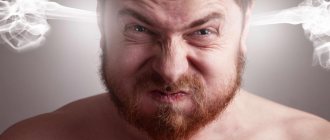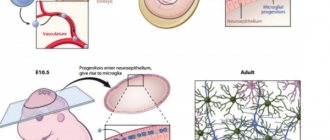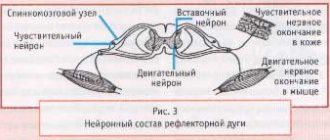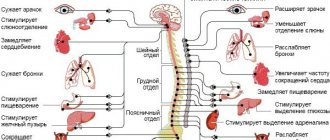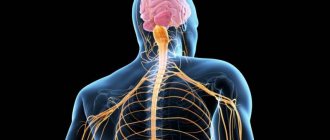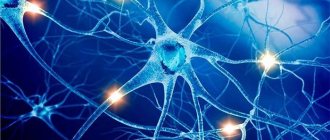Excitability in psychology is a property of the human psyche, which manifests itself in the ability to respond to external and internal stimuli. This is a state that allows you to move from a state of rest to an active emotional reaction. For example, a state of intense joy, anger, grief or fear. Increased excitability is characterized by excessive and often inadequate reactions to any stimuli and factors. A person with increased excitability is often impulsive and even aggressive, and is incapable of adequately perceiving the situation. This leads to the inability to build healthy social relationships with the environment.
What is tremor?
Tremor is an uncontrolled rhythmic contraction of muscles, which most often occurs in the limbs, less often in the head, and the whole body. People over 50-55 years of age are most susceptible to pathology, but the condition can occur at any age, starting from infancy.
A pathological disorder is associated with a weakening of the body or diseases. As an independent pathology, it does not pose a threat to life, but worsens its quality and everyday life. As an alarming symptom, it requires careful diagnosis and appropriate therapy. If not diagnosed and treated in a timely manner, it leads to loss of performance and disability.
One of the significant anomalies of sexual life is an abnormal increase in sexual sensations and ideas and the resulting strong and frequent need for sexual satisfaction.
The fact that the sexual desire and desire for procreation inherent in every normal person has not received a dominant meaning in a person’s life must be explained by centuries-old upbringing; Moreover, despite the temporary ebbs and flows, sexual desire, being only an episode in the feelings and aspirations of cultured people, imparts to their social and moral feelings a higher, noble, sublime character, giving wide scope for both personal and social activities.
Further, moral and criminal laws keep the sexual desire of a cultured person within certain boundaries established in the interests of society and protecting in particular the modesty and morality of the latter; these laws force a person to overcome his attraction when it runs counter to altruistic social requirements.
If these requirements could not be fulfilled by a normal, cultured person, then there would be no family, no state, these foundations of moral and legal community life.
In fact, in a normal, mentally healthy person, who has not lost his mind and prudence due to poisoning with alcohol and other similar drugs, sexual desire never reaches such a height as to capture all his thoughts and feelings, absorb him completely, force him violently, uncontrollably, impulsively strive to satisfy sexual desire with oblivion of moral and legal laws, and even after performing sexual intercourse, destroy oneself in an insatiable craving for new pleasures.
Sexual desire of this type is certainly pathological. On occasion, it can lead to sexual affect of such strength that, with a darkened consciousness, in a state of mental insanity, under the influence of an irresistible desire, a violent sexual act is committed.
Such phenomena have still been little studied from a scientific point of view, although they are of great importance for the court, since in such a state of mind, when natural sexual desire, having reached a pathological height, comes into conflict with all moral and legal norms, there can hardly be any talk of sanity. For society and for the forensic doctor who has to give an opinion, it is very important that such cases of irresistible attraction, leading to severe and extremely abnormal sexual affects, occur only among persons of a certain category, among degenerate people, and almost exclusively on the basis of hereditary degeneration.
Unfortunately, the number of people with various signs of physical and mental degeneration is quite large in modern society, especially in cultural centers. In connection with the perversion of sexual life, especially due to moral dementia of a degenerative nature, monstrous, most terrible sexual crimes often arise with the assistance of alcohol, which would be a disgrace to humanity if it were assumed that they were committed by normal people.
The commission of such crimes by degenerates, and in some cases by abnormal people, is accompanied by violent actions or impulsive delirium. This nature of actions is characteristic of mental degeneration.
The mode of action corresponds to hereditary or acquired properties and largely depends on the potency or impotence of the person in question.
Such pathological sexuality is a terrible misfortune for a person, because he is constantly in danger of violating moral and criminal laws, losing honor, freedom and even life. Alcohol consumption and prolonged sexual abstinence can always cause such strong sexual affects in such degenerates.
Along with severe manifestations of pathological sexuality based on mental degeneration in the form of “Violent actions,” a less dramatic expression of excessive sexuality occurs more often. We encounter this form in its weakest degree. In people whose sexual passion is constantly in need of satisfaction, it is very strong in nature, and the whole meaning of life, all the happiness of their life lies for them.
in satisfying sexual desire; however, they do not have painful attractions, they can usually control themselves, maintain external decency, and not compromise themselves; Otherwise, they strive to use every opportunity for their own purposes and take advantage of it to an excessive extent. The next stage is represented by “skirts”, Don Juans, whose whole life is spent in the indiscriminate satisfaction of their sensuality, and, as people with a perverted moral sense, they do not stop at either seduction, adultery, or even incest.
Observation 11
P, house manager, 53 years old, married, without severe heredity and epileptic phenomena, a moderate carouser, without symptoms of premature old age, discovered, according to his wife, throughout his married life (from the age of 28) excessive sexual passion, sharp lust, significant potency and was insatiable in sexual pleasures. During copulation, he was “like a beast, wild, trembling all over, sniffling,” so that the somewhat cold wife felt disgust and performing marital duties was torture for her.
He tormented her with jealousy, and soon after the wedding he seduced his wife’s sister, an innocent girl, and fathered a child with her. In 1873, he took her and the child into his house and thus had two wives, and he preferred his sister-in-law, which his wife considered the least evil. Over the years, his lust increased and his potency decreased. He often helped himself by masturbating, even immediately after copulation had taken place, and he was cynically not embarrassed by the presence of his wives. From 1892, he began to engage in debauchery with his 16-year-old pupil, usually forcing the girl to masturbate him. He even tried to force her to copulate with a revolver in his hand. He made the same attempt in relation to his unmarried daughter, so that he often had to protect the latter from his encroachments. At the clinic, P. behaved calmly and decently, explaining everything by increased sexuality. He didn't justify his actions, but he couldn't help himself with anything else. His wife's coldness forced him to resort to adultery. No mental disorders are noticeable, but all ethical feelings are absent. During the 25 years of marriage there were several epileptic seizures (!). No signs of degeneration are noted.
Based on my research, I consider this sexual hyperesthesia to be a sign of functional degeneration. Whether such a phenomenon can be acquired, accidental in a person not burdened by heredity - this question must be subjected to scientific research. It is argued that this is possible due to poisoning with cantharidin, alcohol, with simultaneous strong sensory arousal, then due to peripheral irritation, such as itching in the genitals, eczema, etc., especially during menopause.
It should also be noted that in a completely normal person the degree of sexual passion is subject to large fluctuations depending on age, the constitutional state of the body, lifestyle, the influence of somatic diseases, etc. Starting from the period of puberty, sexual desire quickly rises to a significant height, in total It is more pronounced between the ages of 20 and 40 and then slowly decreases. Marriage preserves and curbs sexual desire.
Changing the object of sexual intercourse increases the strength of attraction. Since a woman is usually more abstinent than a man in sexual relations, a sharp increase in her sexual need should be viewed as a pathological phenomenon. Residents of large cities, to whom everything reminds them of the sexual sphere, to whom everything excites them to sexual pleasure, (other things being equal) have more passion than residents of the village. A luxurious, pampering, sedentary lifestyle, the predominance of animal food, the use of alcoholic beverages, spices, etc. have a stimulating effect on sex life.
In women, sexual activity is enhanced during the postmenstrual period. In neuropathic women, excitement at this time can reach pathological heights.
The intense concupiscence of consumptives even in the later stages of the disease is noteworthy. In general, hyperesthesia of central origin due to predisposition is often a partial phenomenon of mental exaltation1. In these cases, when the cerebral cortex, and with it the psychosexual center, are in a state of hyperesthesia (abnormal excitability of fantasy, facilitated associations), not only optical and tactile, but also auditory and olfactory sensations are sufficient to determine erotic ideas.
Magnan reports about one girl who, since the onset of puberty, discovered an ever-increasing sexual desire and satisfied it through masturbation. Gradually, this increase in sexual desire reached such an extent that the very sight of any man brought her into extreme excitement, and since she could not vouch for herself, she locked herself in the room each time until the attack passed. In the end, wanting to calm the painful passion, she began to give herself to the first man, but neither normal sexual intercourse nor masturbation brought her relief, and she had to be placed in an institution for the mentally ill.
In parallel to this, we can cite the following case. We are talking about a mother of five children, who, suffering greatly from an insatiable sexual desire, repeatedly tried to kill herself, then was admitted to a hospital for the mentally ill. Here her condition improved, but she no longer trusted herself and I was afraid to leave the hospital.
Many expressive cases of this kind, relating to both men and women, are given in the author’s article “On some anomalies of sexual desire,” observations 6, 7 (Archiv für Psychiatrie, VII, 2).
How strong, dangerous and severe sexual hyperesthesia is for persons suffering from this anomaly is shown by the following two observations.
Observation 12.
Sexual hyperesthesia. Masturbation in front of students at school. Ts, 36 years old, married for 12 years, father of 7 children, school director, constantly masturbated during class, and although the side of the pulpit facing the students was closed, they noticed it. One day the night before, he drank a little more than usual, before the start of the lesson he had trouble and during the lesson, at the sight of a 15-year-old student who had excited him for a long time, he fell into a state of sexual passion, he got an erection, and he, without controlling himself, grabbed the genitals, after which ejaculation immediately occurred. Only then did he understand what had happened, understood the shame of what had happened and tried to make sure the girls didn’t notice anything.
He could not point out the darkening of consciousness, the lack of memory during this sexual passion.
Since his entire previous life was impeccable, the court assumed that he was in a sick state at that time and subjected him to an examination. My research revealed the following. C came from healthy parents. Two relatives were epileptics. At the age of 13, a severe concussion of the brain followed by an acute weakening of reason, which lasted three weeks. Since then, severe irritability and intolerance to alcohol.
From the age of 16, the awakening of sexual life in a very strong form, with strong sexual irritability, so that just reading obscene books, the sight of a photograph of a woman was enough to quickly induce ejaculation. At the age of 18, copulation occurs occasionally. Most often, it was enough for him to touch the woman’s hand for orgasm and ejaculation to occur. Married at the age of 24. Sexual intercourse 3-4 times a day, masturbation and “mental copulation” at the same time.
Since the birth of his 4th child, due to economic considerations, he was forced to abstain from sexual intercourse, he rejected condoms, helped himself by self-masturbation, touching a woman and the daytime emission caused in this way, but this did not satisfy him, he was constantly sexually aroused and almost every 6 weeks he came to such a state that he lost his will and reason, and, in order to protect himself from sexual aggression towards a woman, he masturbated intensely. Since this relative abstinence, Ts was so hot-tempered and irritable that he often beat his wife and children for no reason, shouted at them, and raged. It happened several times that during such strong emotions he lost consciousness, fell to the ground, and wheezed in a peculiar way. After a few minutes he came to his senses, but did not remember what had happened. He had a similar attack three days after the offense was committed.
I found C to be an intelligent, developed man, full of remorse and shame. He understood that he could no longer be a teacher at a girls' school, and complained about his unnatural, unlimited sensuality. He made no attempts to justify his action, but pointed out that due to his insatiable lust, excessive work (up to 12 lessons daily), he had recently completely upset his nerves. There are no signs of hair on the head, the parietal part of the skull is convex. The genitals are large, flaccid, and generally normal. The patellar reflex is greatly increased.
My conclusion was that C suffered from painfully increased sexual power, in all likelihood, also epilepsy, and committed the offense in a state of pathological affect, when his ability to control himself was reduced to a minimum. Ts. was released from further prosecution and received a pension.
Observation 13.
On July 11, 1884, R., 33 years old, a servant, was admitted to the clinic with paranoia of persecution and sexual neurasthenia. The mother was a neurasthenic subject, the father died of a spinal cord disease. Strong sexual desire from early childhood, and from the age of 6 it is already conscious. From the same time onwards there was masturbation, from the 15th year pederasty, and sometimes sodomistic acts. Subsequently, sexual abuse in marriage with the wife. From time to time, aberrant impulses, attempts at cunnilingus, giving his wife Spanish flies because her lust did not match his own. After a short marriage, the wife died. The patient's financial situation worsened, and he was deprived of the opportunity to have normal sexual intercourse. Again masturbation and the use of an animal's tongue (as part of a sodomistic act) to achieve ejaculations. At times, priapism and a state close to satyriasis. Then, as sexual neurasthenia and hypochondriacal attacks intensified, a weakening of excessive desire began to be noticed, to the satisfaction of the patient.
As a unique form of sexual hyperesthesia
It should be noted that there are cases
of women
who have a strong need for sexual intercourse with a certain man, and this need urgently requires satisfaction. “Unhappy love” for another man can quite often occur due to mental or physical (marital impotence!) dissatisfaction in marriage among passionate women, but in the absence of severe heredity it is usually suppressed by ethical principles. The situation is different in pathological cases, that is, on the basis of mental degeneration.
Fetishism almost always plays a role here. Sexual desire is irresistible, sometimes occurring periodically. Attempts to fight it cause a painful state of fear. The painful need is so strong that all considerations associated with shame, an insult to morality, and female honor recede before it, and this is done without any shame, even in the presence of her husband, while a normal, mentally healthy woman strives in every possible way to hide this terrible secret.
Magnan (Psychiatrische Vorlesungen. bbers, von Möbius. H. 2, 3) reports, based on his practice, two impressive cases of this kind. One particularly significant case involved a young lady, the mother of three children, with an impeccable past, but the daughter of a mentally ill person. One day, without any embarrassment, she told her amazed husband that she loved a young man and would commit suicide if she was prevented from having an intimate relationship with him. Just let her satisfy her ardent passion for 6 months, and then she will return to the hearth and home. Currently, her husband and children are nothing to her in comparison with her lover. The unfortunate husband took his wife to a remote area and subjected her to medical treatment. This pathological love of married women for other men still needs scientific coverage from the point of view of sexual psychopathology. I
observed 5 cases belonging to this category. In all of them we were talking about persons burdened with severe heredity (degenerate). The painful state occurred in paroxysms, in one case it recurred several times and differed sharply from the relatively healthy period of life. In a healthy state, deep remorse for what happened always appeared, which, however, was recognized as an inevitable misfortune, depending on a mentally abnormal state.
During the period of a painful state, there is sometimes complete indifference to the husband and children, reaching the point of disgust for the former, and a simultaneous complete misunderstanding of the meaning and consequences of scandalous behavior for women's and family honor and dignity. It is remarkable that in all cases the offended husbands and relatives understood that the cause was a painful condition, before their opinion was confirmed by medical research.
In contrast to the non-psychopathic, although overly lascivious, ordinary Messalina, in this case sexual promiscuity is only an episode in the life of a previously virtuous woman, then illicit intercourse is strictly monogamous and the satisfaction of sexual desire does not represent the whole essence of a morbid delusion. The latter facts, as well as the fact that the unfortunate woman does not give herself to all men, but only to one lover, are very important for distinguishing this condition from nymphomania. In three of my cases, the grossly sensual moment was not in the foreground at all, and the impetus for the violation of marital fidelity was the charm of the character of the fetish, mental properties, and in one case, the voice. In two cases, however, I was able to prove that this was a case of real sexual hyperesthesia with the complete coldness of the husband; in these cases, a simple touch caused an orgasm, and sexual intercourse gave the greatest pleasure. Of course, in these latter cases, complete sexual submission arose (see observation 234 below).
Causes
In most clinical cases, hyperkinesis is caused by changes or ongoing pathological processes in the parts of the brain responsible for movement. Other factors that cause uncontrolled movements are:
- dysfunction of the central nervous system, neurological pathologies - multiple sclerosis, cerebral palsy, encephalopathy and others;
- endocrine diseases, increased production of thyroid hormones - thyrotoxicosis;
- cerebrovascular accidents, atherosclerosis of cerebral vessels, the presence of cholesterol plaques;
- hereditary pathologies - Wilson-Konovalov, Minor, Hallervorden-Spatz disease;
- degenerative changes in the brain - dementia, Parkinson's disease;
- tumors of the brain and spinal cord of various types, the presence of metastases;
- strokes of various origins;
- osteochondrosis;
- hypoglycemia;
- renal, liver failure;
- abuse of drugs and alcoholic beverages;
- toxic poisoning;
- side effect when taking certain medications;
- stress, depression.
In addition, the causes of trembling limbs are excitement, emotional stress, mental and physical fatigue.
Why are my hands shaking
Why does tremors occur in the hands, what are the causes of the condition. According to WHO statistics, limb tremors are the most common motor function disorder. Previously, it was believed that shaking hands were a problem for older people. Nowadays, essential tremor, which is inherited, is diagnosed in young people.
- The cause of deviations is an external irritant - excitement of the nervous system, stress, excitement, depression. This is explained by a hormonal surge during emotional arousal.
- Increased physical activity in the gym or work involving heavy physical labor. It’s simpler – your arms or legs are trembling from fatigue.
- Internal tremors are provoked by chronic fatigue, which is especially noticeable when drinking energy drinks.
- Alcohol and drug abuse produces similar symptoms. The manifestation intensifies with the onset of withdrawal symptoms and withdrawal symptoms. After taking the next dose it goes away.
- Taking prescribed medications has a side effect that causes your hands to shake. If such a reaction occurs, you should notify your doctor, who will change the medicine to a drug of similar effect.
- Trembling in the hands, coupled with general weakness and apathy, is the main manifestation of hypoglycemia, a sharp decrease in glucose levels. A similar condition is caused by long-term dieting or fasting.
- Hand tremors are provoked by injuries, diseases of the spine, such as osteochondrosis, displaced or pinched discs, and previous surgical interventions.
- Hand tremors are caused by serious pathologies. Based on the nature of the trembling and accompanying symptoms, a diagnosis is suggested. These may be: nervous disorders, depression, atrophic phenomena in the cerebellum, Parkinson's disease, endocrine disorders.
Using the latest diagnostic techniques, doctors determine the exact cause of hyperkinesis.
Cause of head tremors
The occurrence of head twitching does not depend on age. Physiological and pathological types are classified.
- Head twitching in infancy is considered normal. Occurs when crying or in REM sleep.
- Physiological or benign tremor occurs at rest, activity, or under severe stress. Characterized by episodic manifestations, lack of progression. Sometimes it may not be felt by a person or noticeable to others.
- The pathological type serves as a symptom of diseases and is noticeable from the outside. It does not cause pain, but it causes discomfort and interferes with a person’s normal functioning.
The causes of pathological hyperkinesis of the head are recognized:
- pathologies of the cervical spine, causing circulatory disorders and compression of the spinal nerves;
- extrapyramidal disorders, manifested by muscle dysfunction;
- paraneoplastic syndromes;
- metabolic encephalopathy;
- prion diseases, characterized by degenerative changes in brain structures and cell death;
- cervical dystonia (torticollis);
- multiple sclerosis.
Also, hyperkinesis occurs in a number of hereditary pathologies: Dejerine-Thomas syndrome, leukodystrophy, ataxia.
Attention. Head tremors do not occur without a reason. If there is no reason for its occurrence, the intensity and duration of the attack have become more frequent, you should immediately consult a doctor and undergo an examination.
Causes of increased emotional excitability
Emotional excitability is, first and foremost, a readiness to respond to stimuli. In the process of forming this readiness, the hormone adrenaline is released, whose release provokes outbursts of aggression, tears, laughter or other emotions. It is important to note that everything depends on the specific situation and the specific person, because different people react differently to the same stimuli. So what is the reason for increased emotional excitability?
The problem of increased excitability occurs in every fifth person. There are many reasons for this, from improper upbringing in childhood and poor nutrition to a busy work schedule and lack of rest. Unfortunately, the problem of increased emotional excitability is typical not only for adults, but also for children. The nervous system of children, in particular teenagers, is too unstable to sharp stimuli and heavy loads. Most often, a state of stress and, as a result, increased nervous excitability of a child arises due to a tense atmosphere at home and on the street, a large amount of information at school and too frequent use of gadgets.
The danger of increased excitability also lies in the fact that it can develop against the background of hereditary predispositions, infections or hormonal changes.
Symptoms
Initial symptoms are manifested by short-term trembling of the upper extremities, twitching of the chin, and nodding. Head movements are made in different directions: up-down, left-right. Localization of manifestations:
- limbs;
- head, lower jaw, lips or tongue;
- facial muscles, vocal cords;
- shaking the whole body.
It also has topographical features - hyperkinesis of only one finger, eyeballs, and abdominal wall muscles. In the future, the intensity, duration, and frequency of movements depend on the type and severity of the pathology.
Have you noticed any symptoms of the disease? Make an appointment by phone or online.
Make an appointment The application is preliminary. An operator will contact you to confirm your appointment.
Your application has been accepted, our specialists will contact you shortly. Thank you for contacting the medical
Types of hyperkinesis
According to the clinical picture, tremor of rest and movement is distinguished. Rest trembling occurs without performing any actions. Movement tremor occurs during physical activity. Complications of types of hyperkinesis include the inability to engage in professional activities, perform independent actions, psycho-emotional disorders, and difficulties in pronunciation.
Physiological tremors
Physiological limb tremor or asymptomatic tremors have no clinical significance. Occurs in a healthy person in all muscle groups. Occurs when strong emotions are manifested - fear, emotional stress, hyperadrenergic states, panic attacks, endocrine disorders. Or, as the body’s reaction to taking medications or alcohol.
It is observed when the hands are fixed for a long time in any position, for example, when holding the weight. Intensifies with overwork, anxiety, physical exhaustion, hypothermia. The peculiarity of this type is the reduction or complete disappearance of the symptom after the cause is eliminated.
Parkinsonian tremor
The most common type of pathological tremor is parkinsonian, caused by lesions in the subcortical areas of the brain. Diagnosed as an isolated or additional symptom of other disorders. More than a quarter of one percent of clinical cases indicate primary manifestations of Parkinson's disease.
Manifested by trembling of the upper limbs, chin, lips at rest. Trembling of the legs, torso, or head rarely occurs. Manifestations decrease with movement and intensify during periods of rest. It is asymmetrical in nature with average amplitude and unequal intensity of tremors on different sides.
With progressive parkinsonism, it spreads to the trunk, lower jaw or lips, and legs. Intensifies in a state of excitement, stress, strong emotional shocks. Occurs in people over 55-60 years of age. It begins on one side of the body and progresses to involve the other.
Postural tremor
Postural or positional tremor occurs in a state of maintaining a stationary position of body parts. Characteristic of certain poses, for example, arms extended forward or arms spread to the sides. It is small-scale in nature, intensifies when trying to concentrate attention, and does not disappear when moving.
Characterized by bilateral or asymmetrical oscillation. Often involving the head, lips, vocal cords, body, legs. Associated symptoms include mild cervical dystonia and increased muscle tone in the arms.
It is caused by heredity, pathologies of the thyroid gland, taking a number of medications, alcohol, and chemical poisoning. Can be treated with medicinal sedatives and traditional medicine.
Intention tremor
Cerebellar or intention tremor is associated with disruption of the midline structures of the cerebellum. It is expressed by trembling of the limbs, which is detected at the end of a purposeful action, for example, touching an object with a finger. Often occurs with the involvement of the torso and neck. Accompanied by speech impairment, involuntary eye rolling, and ataxia.
Caused by damage to the cerebellum due to stroke, multiple sclerosis, tumors or degenerative pathologies. Damage to one side of the brain provokes tremors on that same side of the body. The direction of movements, posture, and gait deteriorate.
Essential tremor
Essential tremor is a common type that occurs due to a genetic predisposition and is observed in blood relatives. The main manifestations begin after 40 years. Children of parents with pathology are at high risk of inheritance.
It appears symmetrically, legs and head tremble. Progresses slowly, starting on one side of the body, gradually affecting the other. The hands are most susceptible to essential hyperkinesis, but other parts of the body are gradually involved in the process. Accompanied by mild gait disturbance.
With age, the severity of symptoms increases, and emotions, stressful situations, exhaustion or a drop in sugar levels also affect. Gradually, the pathology affects the ability to perform everyday tasks.
A feature of essential tremor is a decrease in tremors after drinking alcohol, and an increase in the consumption of caffeine.
Syndrome of increased neuro-reflex excitability
In the first part, you learned what CNS PPP is and what the role of a pediatric neurologist is in the treatment of this disease. And one of the syndromes of this disorder is muscular dystonia syndrome.
Here I will focus on the syndrome of increased neuro-reflex excitability. This is a fairly common syndrome in children aged 1-4 months. This syndrome manifests itself in the child’s excitability, shuddering, throwing hands, trembling chin, screaming for no apparent reason, and sleep disturbance. Such disorders are most often associated with somatic rather than neurological disorders.
A child may cry and become restless for many reasons. Intestinal colic is very common in young children. After the 1st month, pediatricians and pediatric neurologists recommend giving the child vitamin D, the lack of which can cause agitation. Children can get colds or become overheated or hypothermic. A child may scream because he is hungry. And there is even evidence that children may experience spontaneous, unreasonable screaming. The experience of a pediatrician is very important here, and, if necessary, consultation with a pediatric neurologist, and possibly a surgeon or other specialist. People often come to me with such complaints to rule out increased intracranial pressure in a child.
Indeed, increased intracranial pressure in children does occur, but, firstly, very rarely, and secondly, contrary to generally accepted opinion, when intracranial pressure increases, children are lethargic and drowsy, and not excitable. Does an adult scream when he has a headache? No. But when the stomach hurts, both children and adults will worry and scream. Many people also claim that if a child does not sleep well, this is a sign of increased intracranial pressure. A newborn baby naturally has an immature nervous system. They often have sleep disturbances.
Children have not formed a “biological clock” (sleep-wake). They may confuse day with night, may sleep for 15 minutes during the day, etc. Clearly such a “biological clock” is formed in children only after 3 years. Experienced pediatric neurologists explain all this to parents during an office visit or a home call.
Due to this immaturity of the central nervous system, children may even experience seizures. And they can be caused by a violation of the metabolism of microelements (magnesium, potassium, calcium), lack of vitamin B6, etc.
Speaking about the immaturity of the nervous system of newborns, I would immediately like to tell you about another syndrome: the syndrome of vegetative-visceral disorders. Often, to make it clearer to people, pediatric neurologists in Moscow tell the child’s parents that this is VSD (vegetative-vascular dystonia) in children under 1 year of age. This syndrome is characterized by the child’s “marbling of the skin,” a possible “blue” upper lip, sweating of the arms and legs (although this can also occur with a lack of vitamin D), “blue” feet, regurgitation and other disorders. I notice that such children react to weather changes, more often to precipitation (snow or rain) or strong wind. Such autonomic disorders do not require drug treatment, but decrease and then completely disappear with age.
The article uses photographs of Anna Geddes.
Author: Voronov Igor Anatolyevich, pediatric neurologist of the PreAmbula network, candidate of medical sciences
Cost of seeing a neurologist:
Primary 2050 rubles, Repeated 1900 rubles.
How to reduce the cost?
MAKE AN APPOINTMENT PRICES
Diagnostics
Diagnostic examinations are prescribed by the attending physician individually in each case. Methods depend on the patient’s age, severity, presence of concomitant pathologies, and include the following steps.
- Examination of the patient by a doctor, collection of anamnesis in order to identify hereditary predisposition, reasons for the occurrence and circumstances under which disorders occur.
- The patient undergoes functional tests.
- PET or two-photon emission tomography to evaluate the functions of parts of the brain.
- EMG is a study of the bioelectrical responses of skeletal muscles to fiber excitation.
- ECG is a method for determining brain activity.
- CT or MRI, revealing structural changes, pathological foci in the intracranial space, parts of the spine.
If thyrotoxicosis is detected, patients undergo an ECG. If necessary, a consultation with a geneticist or neurosurgeon is prescribed.
Which doctor should I contact?
A neurologist examines and treats patients with all types of tremor. If trembling of any part of the body occurs, before contacting a doctor, it is necessary to identify and remember the triggers for increased hyperkinesis and cessation of the attack. Special attention is paid to provoking factors, causes of trembling in the body, tremor of the head, hands to prescribe effective treatment
Also, it is necessary to consult a doctor with an already diagnosed pathology in case of intensification of attacks, increase in duration, sharp deterioration of the condition, or if you suspect that your hands are shaking due to taking medications.
Treatment methods
A neurologist who will prescribe treatment will tell you how to get rid of hand tremors using therapy methods. The goal is to eliminate the causes that led to hyperkinesis and alleviate the patient’s condition. The following is used as drug therapy:
- sedatives, tranquilizers that reduce nervous tension;
- anticonvulsants that reduce the degree of tremors in the hands and body by reducing the excitability of neurons;
- antihypertensive drugs to reduce high blood pressure;
- B vitamins eliminate nervous excitability.
Along with conservative therapy, it is recommended to normalize lifestyle, avoid stress, psychological tension, practice breathing exercises, and relaxation procedures. In some cases, treatment requires surgery.
Following the recommendations of the attending physician and preventing the disease guarantee the success of treatment. A healthy lifestyle, avoiding stressful situations, proper nutrition, blood pressure control and participation in accessible sports will help you find emotional balance and minimize the risk of relapse.
This article is for informational purposes only. Consult your doctor for diagnosis and treatment.
Restless child
Is increased excitability in a child always a sign of illness? What is the place of herbal remedies in the correction of increased emotional excitability? Why do “growing pains” sometimes require drug treatment?
Increased excitability, emotional lability, sleep disturbances, fatigue - all of these symptoms are familiar to doctors firsthand. With such complaints, parents, tired of the behavior of their own children, often turn to pediatricians, neurologists and family doctors. It does not always turn out that children have severe disorders of the nervous system or psycho-emotional sphere. However, in most cases, pediatric patients require medical attention.
Although practice shows that it is often quite possible to do without medication correction, most parents trust medications more. At the same time, they clearly give preference to so-called “natural” remedies (mainly of plant origin). Sometimes parents equate this concept with homeopathic medicines, which do not always consist exclusively of herbal ingredients. The therapeutic arsenal of allopathic and homeopathic medicines presented in Russia allows you to choose the right remedy for children of any age.
Providing assistance to children with attention deficit hyperactivity disorder (ADHD) seems somewhat more difficult, since these patients require joint efforts on the part of neurologists, psychologists and psychiatrists. Unfortunately, today there are no stimulant drugs (Ritalin, methylphenidate) used in other countries of the world for the treatment of ADHD in our country [1, 2]. Instead, nootropic drugs are used (nootropil, Semax, Pantogam, etc.) in combination with various multivitamin preparations [3]. Drugs like those mentioned should be prescribed exclusively by neurologists (with monitoring of the effect of treatment, individual dosage selection and periodic monitoring).
A special category of patients are children aged from one to three years, whose psycho-emotional status in early childhood is characterized by instability, increased excitability, and various behavioral reactions. To denote this condition in the English literature there is the term temper tantrums; in Russia, a similar concept does not exist, although sometimes they use the expression “hysterics of the second year of life” (which is not entirely true, since, as already indicated, the manifestations described above can be observed to varying degrees of severity in children under 3 years of age) [4 ]. Until relatively recently, the quite acceptable term “neuropathy” was accepted among neuropsychiatrists, but in the International Classification of Diseases, 10th revision (ICD-10), such a concept no longer exists [5]. The described “growing pains”, which is equally a pedagogical and medical problem, most often disappears when children reach the specified age, but sometimes requires additional medications, since it can subsequently transform into neuroses, neurosis-like states and psychopathy. The use of tranquilizers (anti-anxiolytics) such as atarax, elenium, lorazepam is a rather serious method of drug correction, which most parents are not enthusiastic about.
At the same time, there are a number of mild sedatives that, if necessary, can be used for the disorders described above in pediatric patients. In particular, Russian doctors most often prescribe valerian, motherwort and the so-called citral mixture to children of early and preschool (and sometimes infant) age. In this case, citral, which is part of the said mixture, plays a secondary role (it is used as an antiseptic and preservative). The recipe for this mixture can vary: valerian (root extract or extract) and/or motherwort, distilled water or 10% glucose solution, sodium bromide (it has long been known that bromine preparations have the ability to concentrate and enhance inhibition processes in the cerebral cortex ), magnesium sulfate. It is not recommended to add antihistamines to the mixture.
Valerian (medicinal). Preparations based on it (isolated infusions, tinctures, as well as solutions in combination with other complex drugs) reduce the excitability of the central nervous system, as a result of which they are usually used as sedatives for nervous excitement, sleep disorders and similar conditions. It has long been proven that valerian preparations reduce reflex excitability in the central parts of the nervous system and enhance inhibitory processes in neurons of the cortical and subcortical structures of the brain. When treating young children, infusions of valerian root are often used.
Motherwort (five-lobed). In pediatric practice, infusions, tinctures and (less commonly) extracts of motherwort are used. The composition of the plant is so complex that it is still being studied. It is believed that the sedative effect of motherwort tincture is 2-3 times stronger than that of valerian tincture [6]. Therefore, motherwort preparations are used for increased excitability, neurasthenia and neuroses not only in children and adolescents, but also in adults. In domestic medicine, in addition to valerian and motherwort, chamomile is widely used.
Pharmaceutical camomile. This medicinal plant is used in the form of a decoction, tincture or tea, since it is a mild sedative, effective in the treatment of sleep disorders, gastrointestinal dysfunction, etc. Examples include soothing tea and chamomile tea from Hipp, which can be recommended in complex treatment manifestations of perinatal damage to the nervous system with the syndrome of increased neuro-reflex excitability, as well as healthy children - to improve sleep. The active components of chamomile include essential oil, azulene, flavonoids, polysaccharides, vitamins and some other biologically active substances. In addition to oral administration, chamomile decoctions are convenient to use as an external remedy (bath).
Among the most common natural-based sedatives produced by the pharmaceutical industry today, mention should be made of such widely used complex preparations as Novo-Passit (manufactured by Galena A.S./Norton Healthcare Ltd., Czech Republic/UK) and Persen (, Slovenia). Novo-passit is available in the form of an oral solution and tablets, and Persen in tablets. Both drugs are based on a combination of medicinal herbs. For example, novo-passit contains extracts of hawthorn, hops, valerian, St. John's wort, lemon balm, passionflower, black elderberry and guaifenesin (the latter is also an expectorant) [7]. Persen consists of extracts of valerian, as well as peppermint and lemon mint [8]. Below we will consider the most important herbal components of these two drugs.
Peppermint. Extracts from the peppermint herb, along with a choleretic, antiseptic and analgesic effect, have calming and antispasmodic properties, and also have a reflex coronary dilator effect. Lemon balm (melissa), which, like peppermint, is an essential oil plant, also has a similar effect. Mint and lemon balm are included in Hipp children's tea, which can be recommended as a general tonic.
Hawthorn (blood red, prickly and pentapalmed). The cardiotonic and antispasmodic properties of hawthorn preparations (due to the content of triterpene compounds and flavonoids) used in the treatment of diseases of the cardiovascular system are well known. But later it was discovered that infusions and extracts of this plant can improve the oxygen supply not only to the myocardium, but also to the neurons of the brain. The sedative activity of hawthorn preparations has been objectively proven. As a result of this, and also because of the low toxicity of plant preparations, hawthorn has become quite widespread as a sedative (infusion of flowers or fruits of the plant, hawthorn tincture, etc.).
Common hops. The value of this herbaceous perennial plant is not limited to its use as a raw material for the brewing industry. The neurotropic effect of herbal preparations from hop cones is associated with the presence of lupulin in them, which has a calming effect on the central nervous system [6]. Hop oil (along with other components) is part of the drug Valocordin (Crevel Meuselbach, Germany). In pediatrics, it can be used 3-15 drops 3 times a day (before meals with a small amount of liquid) depending on age and symptoms [7].
St. John's wort (perforatum). The herb St. John's wort has multifaceted pharmacological properties, among which the antispasmodic effect deserves special attention, as well as the capillary-strengthening effect typical of compounds containing vitamin P. Therefore, St. John's wort is a valuable component of sedative medicinal preparations and is quite widely used in this capacity.
Among homeopathic remedies, in the light of the problem under consideration, Nervohel (Germany) is of interest to doctors. The drug is available in sublingual tablets, which are recommended to be taken one 3 times a day. There are no contraindications to the use of the drug, and no side effects have been identified while taking it [8]. Another drug with a similar effect is valerianachel. In addition to valerian tincture, this homeopathic remedy includes hawthorn, lemon balm, chamomile, oats (the B vitamin complex contained in oats plays an important role in the trophic function of the nervous system) and other components. Valerianahel is prescribed to children from 2 years of age (children 2-6 years old - 5 drops 3 times a day, patients 6-12 years old - 10 drops 3 times a day) [8].
In some cases, the problem of a restless child can be solved without resorting to prescribing any medications. This is facilitated by certain routine measures (control of the duration of daytime and night sleep, walks in the fresh air, balanced nutrition), hardening, medicinal baths (with herbal or salt collections), proper upbringing, adequate psycho-emotional climate in the family, etc.
Sometimes a restless child is a product of social deprivation or overprotection in the family. It is for this reason that preschool children are recommended to attend kindergartens. Even the practice of involving nannies and tutors in raising a child (popular among financially secure Russians) cannot replace the child’s communication with other children, which contributes to a basic understanding of the norms of social life.
However, physicians must navigate the numerous medications offered as sedatives. Only in this case it is possible to ensure timely correction of the psycho-emotional disorders that have arisen. The concept of evidence-based medicine implies that when making clinical decisions one should be guided by the most reliable and verified information about the effectiveness of the prescribed treatment [9].
Literature
- Child Neurology (Menkes JH, Sarnat HB, eds.). 16th ed. Lippincott Williams and Wilkins. Philadelphia-Baltimore. 2000. 1280 rub.
- Nelson textbook of pediatrics (Behrman RE, Kliegman RM, Jenson HB, eds., Nelson WE, Sr. Ed.). 16th ed. Philadelphia-London.-WB Saunders. 2000. 2414 rub.
- Lebedev B.V., Freydkov V.I., Shanko G.G. et al. Handbook of childhood neurology / Ed. B.V. Lebedeva. M.: Medicine, 1995. 448 p.
- Zigelman D. The pocket pediatrician. Doubleday. New York - London, 1995. 432 p.
- Bulakhova L. A., Sagan O. M., Zinchenko S. N. et al. Handbook of a child psychiatrist and neurologist / Ed. L. A. Bulakhova. K.: Health, 1985. 288 p.
- Sokolov S. Ya., Zamotaev I. P. Handbook of medicinal plants (herbal medicine). 2nd ed. M.: Nedra, 1987. 512 p.
- Register of Medicines of Russia “Encyclopedia of Medicines” / Ch. ed. G. L. Vyshkovsky. 9th ed., revised. and additional M.: RLS-2002, 2002. 1504 p.
- Vidal Directory. Medicines in Russia: Directory / Ved. ed. E. A. Tolmacheva, 8th ed., revised, corrected. and additional M.: AstraPharmServis, 2002. 1488 p.
- Clinical recommendations based on evidence-based medicine: Trans. from English / Ed. I. N. Denisova, V. I. Kulakova, R. M. Khaitova. M.: GEOTAR-MED, 2001. 1248 p.


